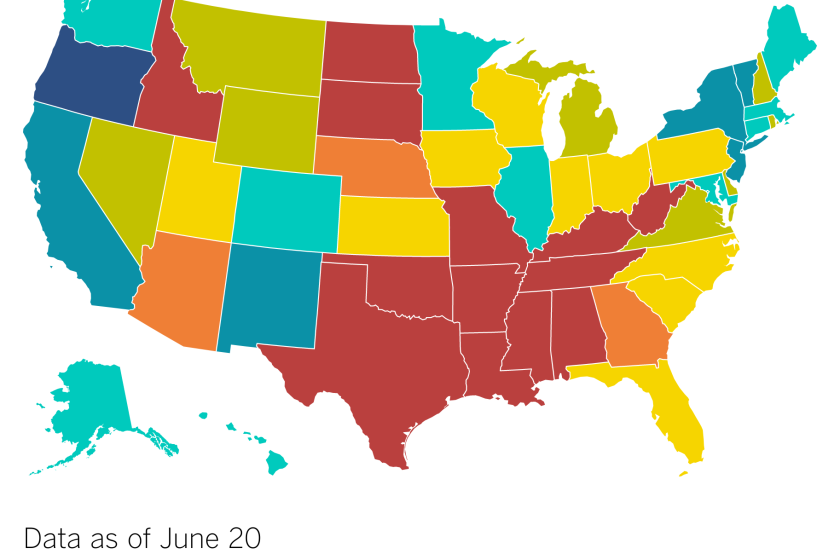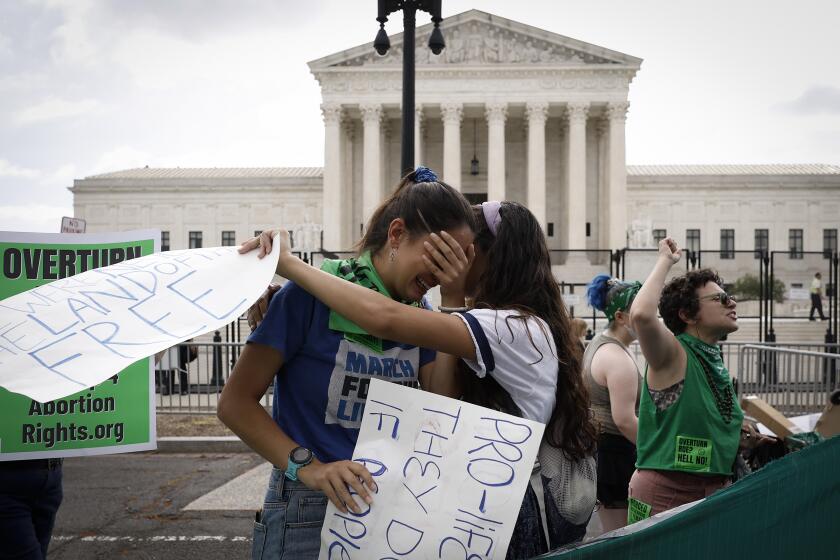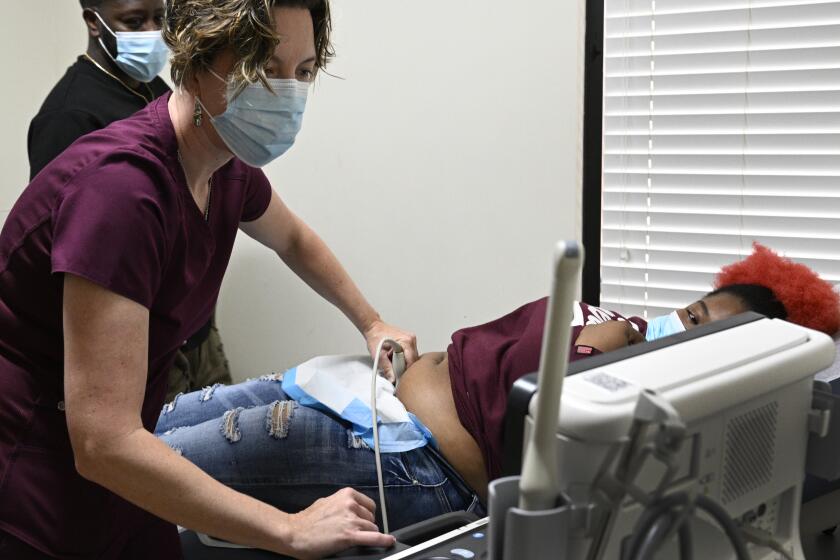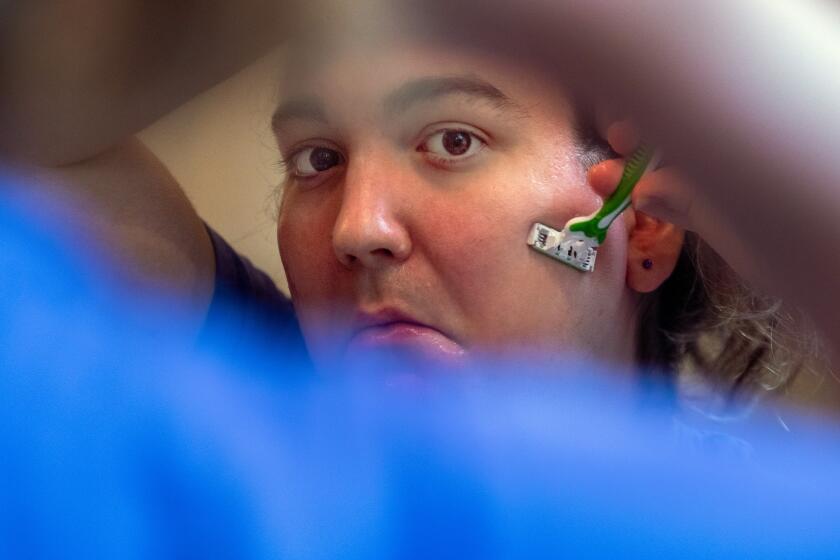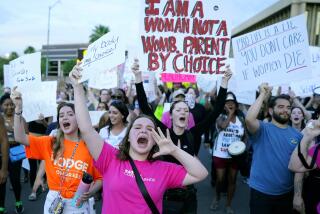Voters in Ohio reject GOP-backed proposal that would have made it tougher to protect abortion rights
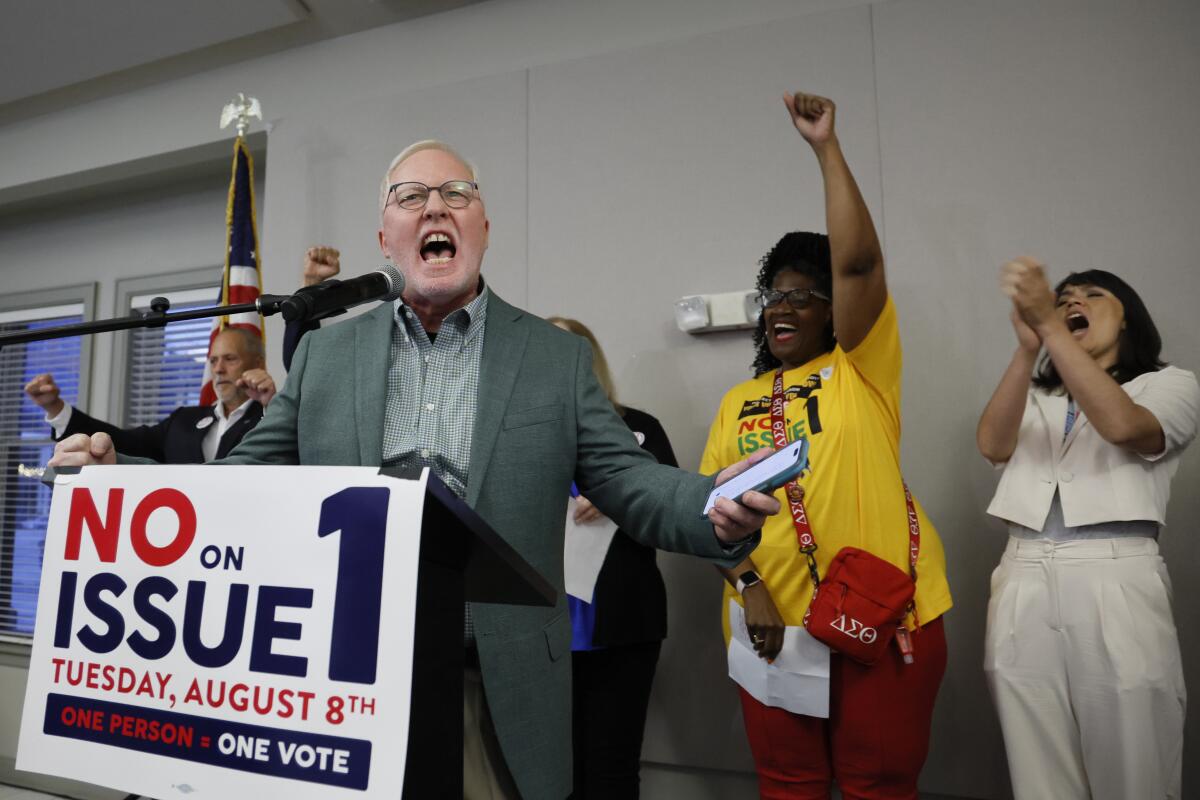
- Share via
COLUMBUS, Ohio — Ohio voters on Tuesday resoundingly rejected a Republican-backed measure that would have made it more difficult to change the state’s constitution, setting up a fall campaign that will become the nation’s latest referendum on abortion rights since the U.S. Supreme Court overturned nationwide protections last year.
The defeat of Issue 1 keeps in place a simple majority threshold for passing future constitutional amendments. It would have raised that to a 60% supermajority, which supporters said would protect the state’s foundational document from outside interest groups.
Opposition to the proposal was widespread, even making its way into Republican territory. In fact, in early returns, support for the measure fell far short of former President Trump’s performance during the 2020 election in nearly every county.
A year after the Supreme Court overturned Roe vs. Wade, leaving abortion decisions to states, where is abortion banned or protected? What comes next?
Dennis Willard, a spokesperson for the opposition campaign One Person One Vote, called Issue 1 a “deceptive power grab” that was intended to diminish the power of the state’s voters.
“Tonight is a major victory for democracy in Ohio,” Willard told a jubilant crowd at the opposition campaign’s watch party. “The majority still rules in Ohio.”
A major national group that opposes abortion rights, Susan B. Anthony Pro-Life America, called the result “a sad day for Ohio” while criticizing the outside money that helped the opposition. In fact, both sides relied on national groups and individuals in their campaigns.
While abortion was not directly on the special election ballot, the result marks the latest setback for Republicans in a conservative-leaning state who favor imposing tough restrictions on the procedure. Ohio Republicans placed the question on the summer ballot in hopes of undercutting a citizen initiative voters will decide in November that seeks to enshrine abortion rights in the state.
Other states in which voters have considered abortion rights since last year’s Supreme Court ruling have protected them, including in red states such as Kansas and Kentucky.
Interest in the special election was intense, even after Republicans ignored their own law that took effect earlier this year to place the question before voters in August. Voters cast nearly 700,000 early in-person and mail ballots ahead of Tuesday’s final day of voting, more than double the number of advance votes in a typical primary election. Early turnout was especially heavy in the Democratic-leaning counties surrounding Cleveland, Columbus and Cincinnati.
One Person One Vote represented a broad, bipartisan coalition of voting rights, labor, faith and community groups. The group also had as allies four living ex-governors of the state and five former state attorneys general of both parties, who called the proposed change bad public policy.
In place since 1912, the simple majority standard is a much more surmountable hurdle for Ohioans for Reproductive Rights, the group advancing November’s abortion rights amendment. It would establish “a fundamental right to reproductive freedom” with “reasonable limits.”
The vote on Tuesday was the latest referendum on abortion rights since the U.S. Supreme Court’s decision last year created a state-by-state patchwork of restrictions and bans. Voters in several states have since approved ballot questions protecting access to abortion, but typically have done so with less than 60% of the vote. AP VoteCast polling last year found that 59% of Ohio voters say abortion should generally be legal.
In a historic reversal, the Supreme Court strikes down a half-century of nationwide abortion rights in the U.S.
Tuesday’s result came in the very type of August special election that Republican Secretary of State Frank LaRose, a candidate for U.S. Senate, had previously testified against as undemocratic because of historically low turnout. Republican lawmakers just last year had voted to mostly eliminate such elections, a law they ignored for this year’s election.
Voters’ rejection of the proposal marked a rare rebuke for Ohio Republicans, who have held power across every branch of state government for 12 years.
Ohio Right to Life, the state’s oldest and largest antiabortion group and a key force behind the special election measure, vowed to continue fighting into the fall.
A former abortion clinic in Alabama evolves amid bans on caring for uninsured patients and offering post-miscarriage treatment and transgender care.
Ohio’s ban on most abortions had been placed on hold under Roe and then allowed to take effect briefly after the court overturned it. Since then, it has been frozen again while a challenge alleging it violates the state constitution plays out.
The abortion amendment would give individuals the right to make their own reproductive healthcare decisions, including on contraception, fertility treatment, abortion and miscarriage care, until a fetus is viable outside the uterus.
Protect Women Ohio, the campaign against the fall abortion question, spent millions on the August election — airing misleading ads suggesting the measure not only codifies abortion, but could pressure children into receiving gender-affirming care and undercut parental rights. Legal experts have said there is no language in the amendment supporting the ads’ claims, but it follows a pattern through this election cycle of misinformation and fear-mongering being used to sway voters.
Florida has outdone other Republican-led states with the most extreme laws in the U.S. targeting transgender adults. Can this lifelong Floridian stay?
More to Read
Sign up for Essential California
The most important California stories and recommendations in your inbox every morning.
You may occasionally receive promotional content from the Los Angeles Times.
